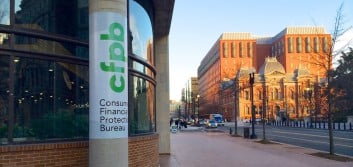Learning the truth about overdrafts can lead to better member service

While the future of the CFPB and its president Cordray may be uncertain under president Trump, one thing remains certain: there will always be a small percentage of credit union members who rely on overdraft privilege to meet their short-term liquidity needs. The time is right for credit unions to provide this valued benefit to members—or improve compliance, operations and service of an existing program—especially since nothing in the president’s recent regulatory announcements even hints that overdraft programs will be banned.
A good place to start is by learning some truths about overdraft privilege and how the service positively impacts your members, many of whom rely on it to pay for medical bills, rent and food. To help you do so, we present several facts about overdrafts that you may not already know:
FACT #1: In a given year, approximately only 25% of members experience an overdraft.
Despite what some news reports imply, most Americans do not overdraft each year. In fact, it is only a small percentage of consumers who look to overdraft programs to help them when they are in a bind. The rest of consumers use other options, such as credit cards, payday lenders or even pawn shops. But, the question remains: if even a handful of members need this service, shouldn’t we strive to honor their overdraft items (provided they have the ability to repay)?
FACT #2: People from all economic brackets experience overdrafts from time-to-time.
Many people assume that it is the poor who overdraw their accounts the most. Yet, the account holders who overdraft their accounts the most often are also the ones who deposit money into their accounts most often. They also deposit higher dollar amounts than those who rarely overdraft. Our data shows that people who overdraft ten or more times in a given year have monthly deposits that range from $3,500 to over $6,000. These frequent and large deposits give them the cash flow they need to pay for the convenience of the service.
FACT #3: The majority of debit card transactions that trigger an overdraft are for necessities.
Some consumer groups and the media have focused on small-ticket purchases, such as a cup of coffee, in their attempt to prove overdraft fees are unfair and punitive. However, our research shows that the majority of debit card transactions that result in overdraft fees occur in grocery stores, vehicle repair shops, and at gas stations—NOT in coffee shops. A Bankrate.com (NYSE: RATE) report states that almost two in three Americans don’t have enough savings to pay for a $500 car repair or a $1,000 emergency room bill. When emergencies happen or funds fall short, consumers seek short-term liquidity options. If your credit union does not provide it, they will look elsewhere.
FACT #4: Overdraft fees help credit unions provide share draft account services to members.
Overdraft protection allows millions of consumers to pay their mortgage, rent and insurance payments, buy food and tend to their medical needs. Credit unions assume risk in providing this service and charge off millions of dollars per year in losses when members do not repay their overdrawn balances. It is appropriate to charge a fee for assuming this risk and providing the service. Revenue from overdraft fees helps fund technology and other member services, such as online banking, mobile access, etc.
Learning the facts behind overdraft privilege can help credit unions make the decision to provide this valuable service and to communicate the benefits to members.





